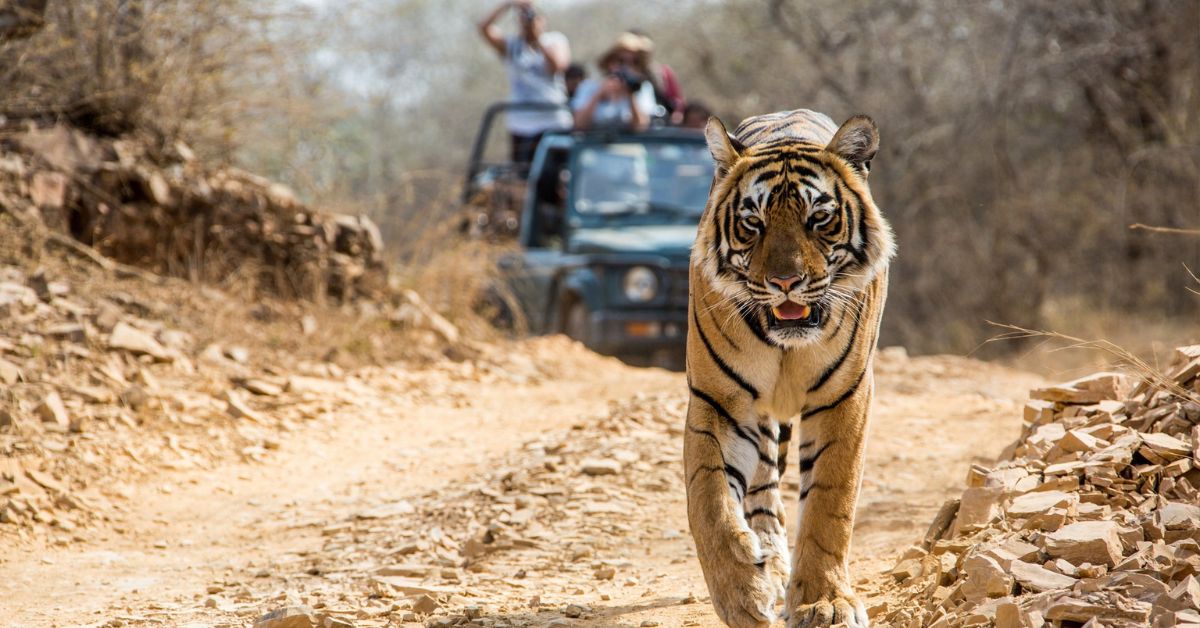Bandhavgarh National Park, Madhya Pradesh unfolds its verdant tapestry, and nestled within its lush embrace lies a sanctuary teeming with raw, captivating nature. This is Bandhavgarh National Park, a haven that calls to wildlife enthusiasts and anyone who craves a breath of fresh air. Renowned for its thriving tiger population, Bandhavgarh beckons you to explore its rich tapestry of life and pristine wilderness.
This travel guide is your portal to the heart of Bandhavgarh. We’ll unearth hidden gems, introduce you to the park’s incredible wildlife, and equip you with the essentials for an unforgettable safari adventure. Whether your heart races at the thought of spotting a majestic Bengal tiger or you simply seek tranquility amidst the whispering forests, Bandhavgarh promises an unparalleled journey into the wild.
How to reach:
Air: Touch down at Jabalpur Airport (JLR), 170 kilometers away. Taxis and buses are on hand to whisk you to the park. Alternatively, Khajuraho Airport (HJR) sits 230 kilometers distant and offers similar onward travel options.
Train: Umaria (UMR) and Katni (KTE) stations boast connections to major cities and are closest to Bandhavgarh. Taxis or local buses will bridge the gap to the park entrance.
Road: Explore Bandhavgarh’s well-connected network via regular buses from nearby Jabalpur, Umaria, and Katni. For a customizable trip, rent a car or hire a private taxi for a comfortable journey directly to the park.
Best time to visit:
Peak Season (October – March): Winter’s cool embrace and spring’s gentle warmth paint this period. With pleasant weather and low humidity, it’s prime time for wildlife safaris. Dryness forces animals towards water sources, making them easier to spot. Tiger sightings are frequent, attracting wildlife enthusiasts and photographers.
Shoulder Season (April – June): Summer’s heat intensifies, reaching its peak in May and June. While temperatures soar, these months offer a unique chance to see wildlife congregating around water bodies to cool down. Birdwatchers also rejoice, as migratory birds boost the park’s avian diversity.
Off-Season (July – September): Monsoon bathes Bandhavgarh in lush greenery from July to September. The park remains open, but safaris might be limited due to rain, and sightings become less predictable. However, this tranquil season offers a serene escape for nature lovers seeking a peaceful immersion in the rain-washed forests.
Attractions:
Wildlife Safaris:
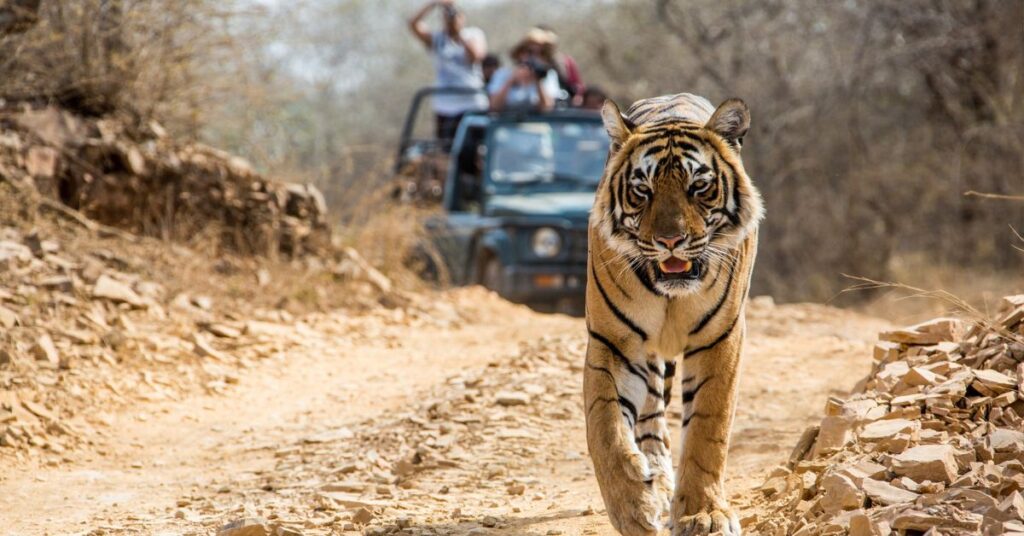
Dive into the raw beauty of Bandhavgarh National Park with a heart-pounding wildlife safari. This sprawling reserve, divided into distinct zones teeming with diverse landscapes, is a paradise for nature enthusiasts. Bandhavgarh boasts one of the world’s highest Bengal tiger densities, making it a prime spot to witness these magnificent creatures in their natural domain.
But tigers are just the beginning. The park explodes with a vibrant tapestry of wildlife. Leopards prowl the shadows, while wild boars and Indian bison (gaur) thunder through the undergrowth. Delicate deer – spotted, sambar, and barking – add grace to the grasslands. Birders, rejoice! Over 250 avian species call Bandhavgarh home, from the vibrant flash of peacocks and parakeets to the soaring majesty of eagles and vultures.
Bandhavgarh Fort:
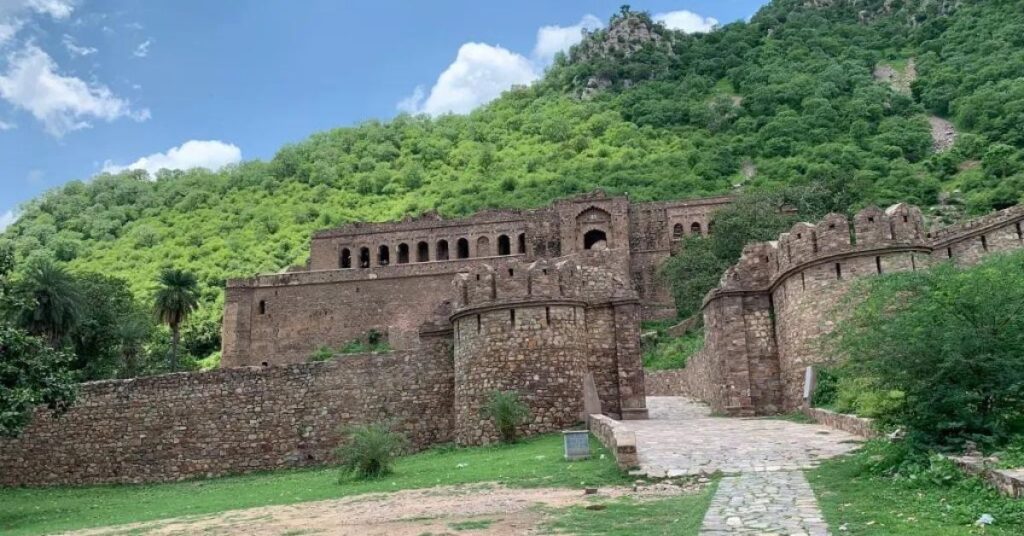
Atop Bandhavgarh National Park’s highest peak, shrouded in history, stands the ancient Bandhavgarh Fort. This 2,000-year-old sentinel isn’t just a peek into the past; it’s a panoramic wonderland. The trek itself is an adventure, weaving through dense forests alive with the possibility of spotting wildlife.
Imagine the fort’s former glory as you explore its ruins. Ancient temples, water bodies, and sculptures whisper stories of forgotten eras. A highlight is the awe-inspiring 10th-century statue of Lord Vishnu reclining on Sheshnag, a significant religious landmark known as Shesh Shaiya.
Scenic Spots:
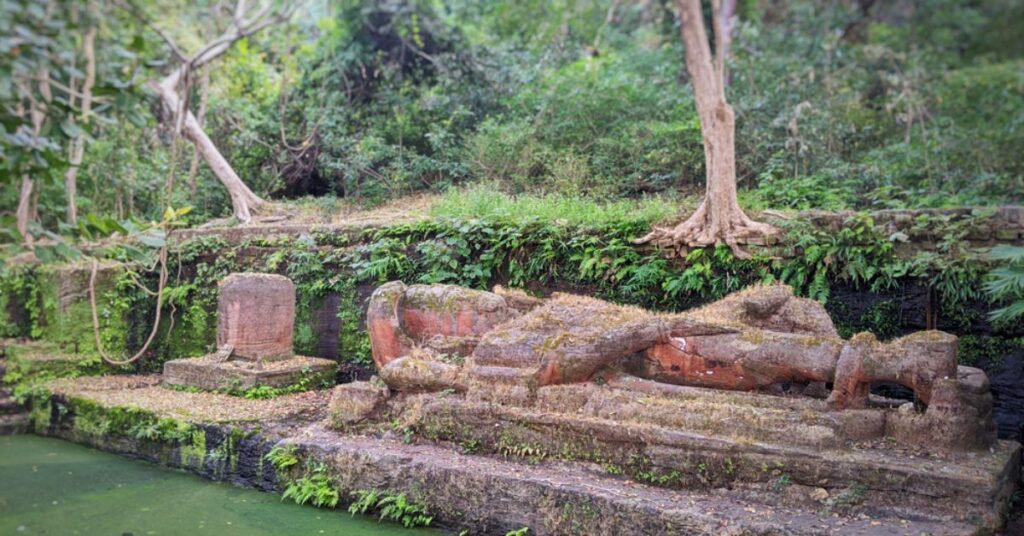
Here, a colossal Lord Vishnu statue reclines serenely on the seven-headed serpent Ananta. Lush greenery surrounds this spiritual and visual delight, with a refreshing spring completing the tranquil scene.
For a different kind of beauty, head to the Rajbahera Dam. This picturesque waterhole attracts a vibrant tapestry of wildlife, especially during the scorching summer months when animals gather to quench their thirst. Birdwatchers will be in their element here, with waterfowl and migratory birds gracing the dam’s shores.
Flora and Fauna:
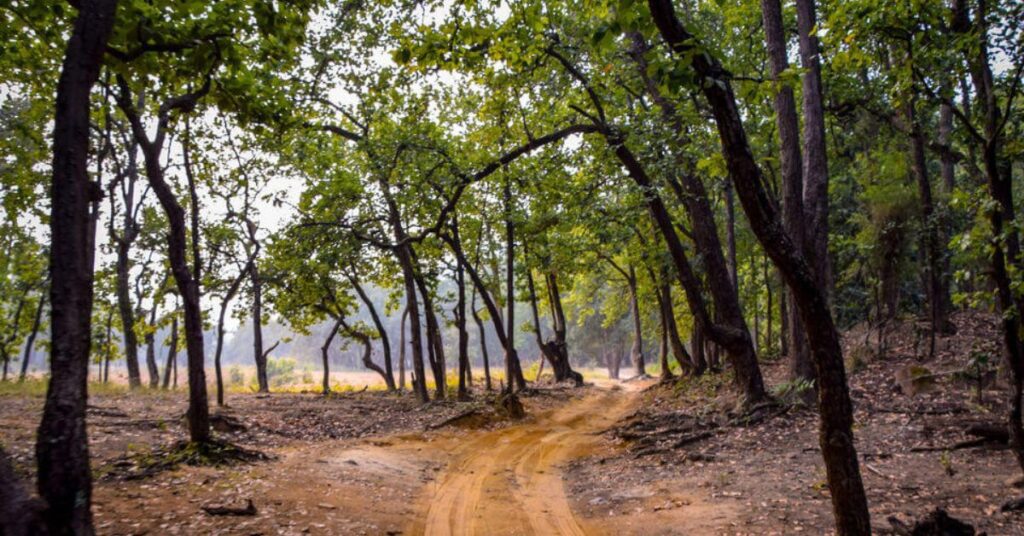
Bandhavgarh National Park explodes with life. A treasure trove of flora and fauna, it showcases the rich tapestry of Central India’s highlands. Dense sal forests dominate the landscape, their towering forms creating a cool, cathedral-like canopy. Bamboo thickets erupt between the giants, while open grasslands offer sun-dappled havens. This variety of habitats weaves a welcoming embrace for an incredible array of wildlife.
Sal trees aren’t just impressive; they’re essential. Their sheltering canopy provides a home for countless species. But the diversity doesn’t stop there. Bamboo groves and mixed forests add another layer, offering both food and shelter for herbivores and smaller mammals.
Local Experiences:
Immerse in Tribal Culture: Explore Baiga and Gond villages, witnessing traditional ceremonies and vibrant dance performances. Learn about their unique medicinal practices and agricultural techniques, and take home handcrafted souvenirs like baskets, pottery, and jewelry.
Tantalize Your Taste Buds: Savor local delicacies like poha, dal bafla, and mawa bati. Participate in cooking demonstrations to unlock the secrets of Madhya Pradesh’s cuisine and discover its symphony of flavors.
Celebrate Local Crafts: Explore bustling markets and specialized centers, witnessing skilled artisans create hand-painted textiles, intricate terracotta figurines, and exquisite bamboo crafts. Participate in workshops and try your hand at these time-honored traditions.
Uncover Nature’s Hidden Gems: Embark on guided nature walks with experienced naturalists. Delve deeper into the park’s ecosystem, focusing on the fascinating world of smaller creatures and diverse plant life.
Live Like a Local: Experience rural life with a village homestay. Participate in daily activities like farming, cooking, and local festivals, gaining a deeper understanding of the local community and forging lasting connections.
Travel tips:
- Be an Early Bird: Bandhavgarh, especially during peak season (October – March), is a hot destination. Book your stay and safari permits well in advance to avoid missing out.
- Prime Time for Wildlife Spotting: Early mornings and late afternoons offer the best chance to see animals, as they’re more active during cooler hours. Schedule your safaris accordingly.
- Camouflage Chic: Opt for comfortable, earth-toned clothing to blend in with the surroundings. Avoid bright colors that might startle wildlife.
- Must-Have Gear: Pack binoculars for clear views, a camera with a zoom lens to capture memories, and a hat for sun protection.
- Adapting to the Elements: Bring layers of clothing, as temperatures can change throughout the day.
- Be Prepared: Carry a basic first-aid kit and any necessary medications. Pack insect repellent to ward off mosquitoes and other insects.
- Hydration is Key: Stay hydrated by drinking only bottled or filtered water.
- Observe from a Distance: Maintain a safe distance from animals and avoid making loud noises that could disturb them.
- Leave No Trace: Be a responsible visitor. Pack out all trash to keep the park clean and protect wildlife.
- Cultural Sensitivity: When visiting villages or interacting with indigenous communities, be respectful of their customs and traditions.
- Seeking Permission: Always ask before taking photographs of people or their homes.
- Eco-Conscious Choices: Opt for eco-friendly accommodations that prioritize sustainability.
- Reduce, Reuse, Recycle: Use reusable water bottles and avoid single-use plastics whenever possible.
- Knowledgeable Guides: Consider hiring a guide to gain valuable insights into the park’s ecology, history, and wildlife behavior. They can also help you spot animals you might miss on your own.
Conclusion
Unveiling the untamed beauty of Madhya Pradesh, Bandhavgarh National Park throbs with diverse life. Spot majestic Bengal tigers, explore ancient ruins, or simply soak in the tranquility – Bandhavgarh caters to every explorer’s soul. Whether you’re a wildlife enthusiast, photography aficionado, or nature lover, this park promises an unforgettable adventure. Immerse yourself in vibrant tribal cultures, embark on thrilling safaris, and delve into the region’s rich history. Plan your eco-friendly escape with Xplro.com, your one-stop guide to unlocking Bandhavgarh’s hidden gems and ensuring a lasting positive impact.
FAQs
1. What is the ideal time to visit Bandhavgarh National Park?
- The ideal time to visit Bandhavgarh National Park is between October and March. During these months, the weather is comfortable, and wildlife, including tigers, is more visible.
2. How do I book a safari in Bandhavgarh National Park?
- You can book a safari online through the Madhya Pradesh Tourism website or via authorized tour operators. It’s wise to make reservations in advance, particularly during the busy season.
3. What are the safari timings in Bandhavgarh National Park?
- Safaris generally run twice daily: mornings from around 6:00 AM to 10:00 AM and afternoons from approximately 2:30 PM to 5:30 PM. The exact times may vary depending on the season.
4. What types of safaris are available in Bandhavgarh?
- Visitors can choose between jeep safaris and elephant safaris. Jeep safaris are more common and available for both morning and afternoon slots. Elephant safaris provide a unique experience but are less frequent.
5. What wildlife can I expect to see in Bandhavgarh National Park?
- Bandhavgarh is renowned for its Bengal tigers. You might also encounter leopards, sloth bears, wild boars, Indian bison (gaur), various deer species, and over 250 species of birds.
6. Is it safe to visit Bandhavgarh National Park?
- Yes, visiting Bandhavgarh is safe. Always follow the guidelines provided by park authorities and your safari guide to ensure a safe and enjoyable visit.
7. What should I pack for my trip to Bandhavgarh National Park?
- Pack comfortable, neutral-colored clothing, binoculars, a camera with a good zoom lens, a hat, sunscreen, insect repellent, and a basic first-aid kit. Light layers are recommended to adjust to temperature changes.
8. Are there accommodation options inside Bandhavgarh National Park?
- Accommodations are not available inside the park, but there are numerous lodges, resorts, and guesthouses in the nearby areas catering to various budgets and preferences.
9. How can I reach Bandhavgarh National Park?
- The closest airport is Jabalpur Airport, about 170 km away. The nearest railway stations are Umaria (32 km away) and Katni (100 km away). The park is accessible by road, with buses and private taxis available.
10. Can I visit Bandhavgarh Fort?
- Yes, you can visit Bandhavgarh Fort, located within the park. The fort offers stunning views and a peek into the region’s history. It’s best to go with a guide to get the most out of your visit.
11. Are there any special regulations I should be aware of?
- Follow all park rules, such as keeping a safe distance from wildlife, not littering, and avoiding loud noises. Always heed the instructions of your guide and park rangers.
12. What local experiences can I enjoy around Bandhavgarh?
- Beyond safaris, you can explore tribal villages, enjoy local cuisine, participate in arts and crafts workshops, go on guided nature walks, and stay in village homestays for a deeper cultural experience.




